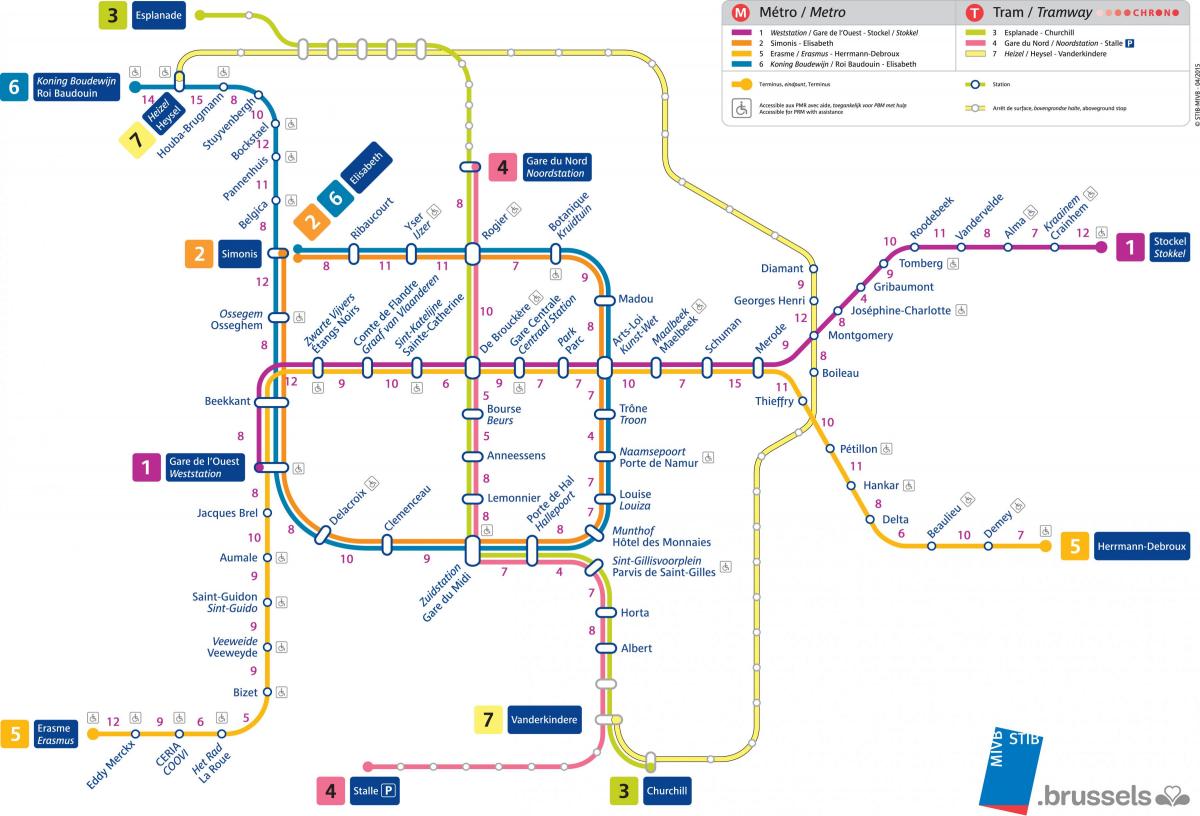search
Brussels tram map
Brussels tram network map. Brussels tram map (Belgium) to print. Brussels tram map (Belgium) to download. The Brussels tram (or streetcar) system is one of the ten largest in the world, carrying some 75.6 million passengers in 2009 (see Brussels tram map). Brussels tram development demonstrates many of the quandaries that face local public transport planners. Brussels tram also has a number of interesting peculiarities. The first horse-drawn trams were introduced in Brussels in 1869, and ran from the Porte de Namur to the Bois de la Cambre.
There are 17 routes totalling 133.4 km, serving most points of the compass, and including two partial ring routes of Brussels tram. These routes use the new longer Bombardier trams as its shown in Brussels tram map. The major part of the North-South Axis (from Lemonnier to Rogier) is now used only by lines 3 and 4 during the day. These Brussels tram lines have been branded Chrono. Tram lines 55 and 56 from Schaerbeek (north of Brussels) that used to use the North-South Axis now terminate at Rogier and nearby Gare du Nord/Noordstation respectively.
Brussels trams have known several liveries. In the beginning of the 20th century, vehicles operated by the Tramways Bruxellois were dark green, while the Chemins de Fer Economiques had chocolate-liveried trams (see Brussels tram map). The Brussels tram system exists in happy symbiosis with an active heritage operation based at the Woluwe depot, and privately hired trams have free access to the tracks.


